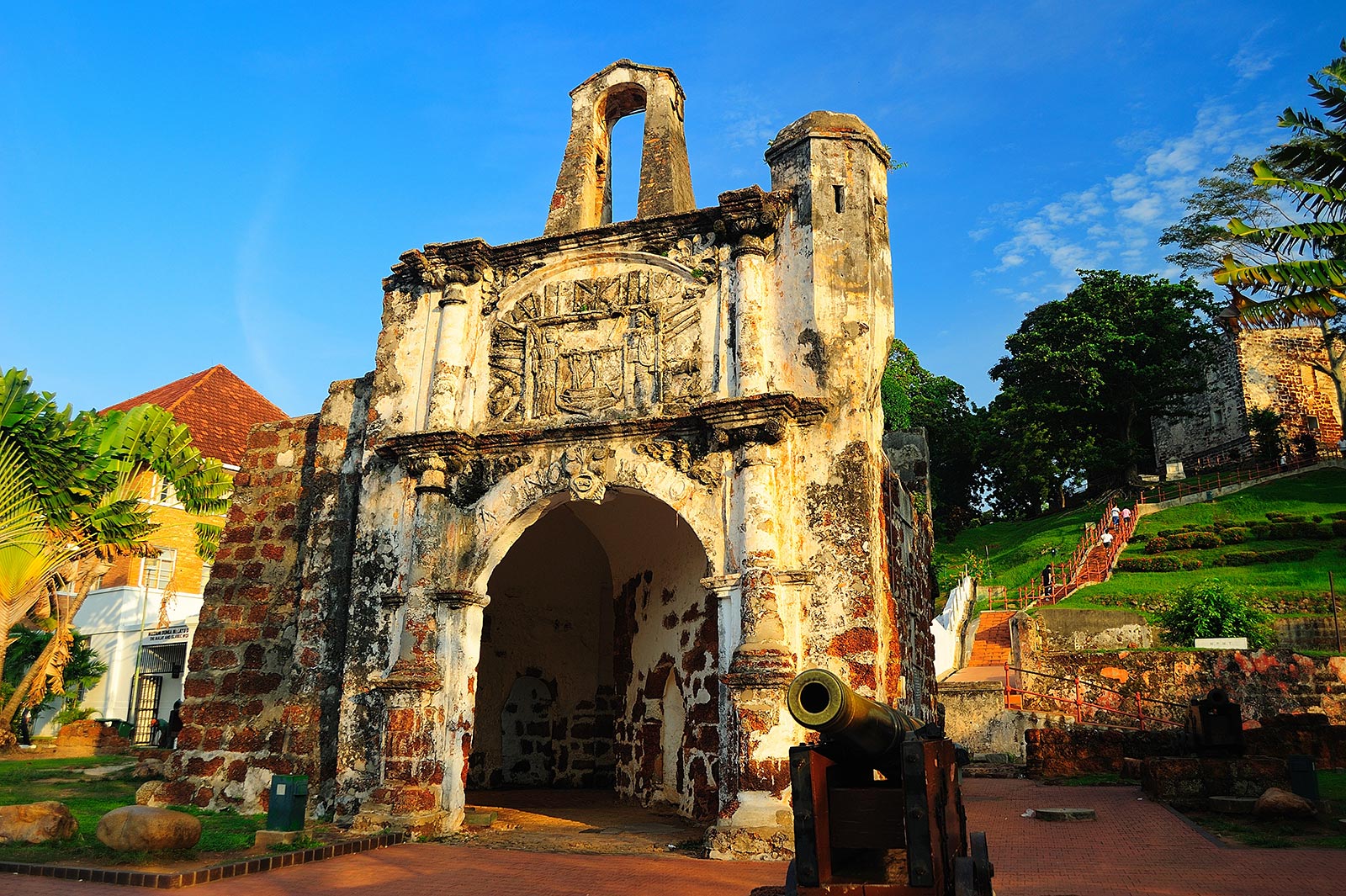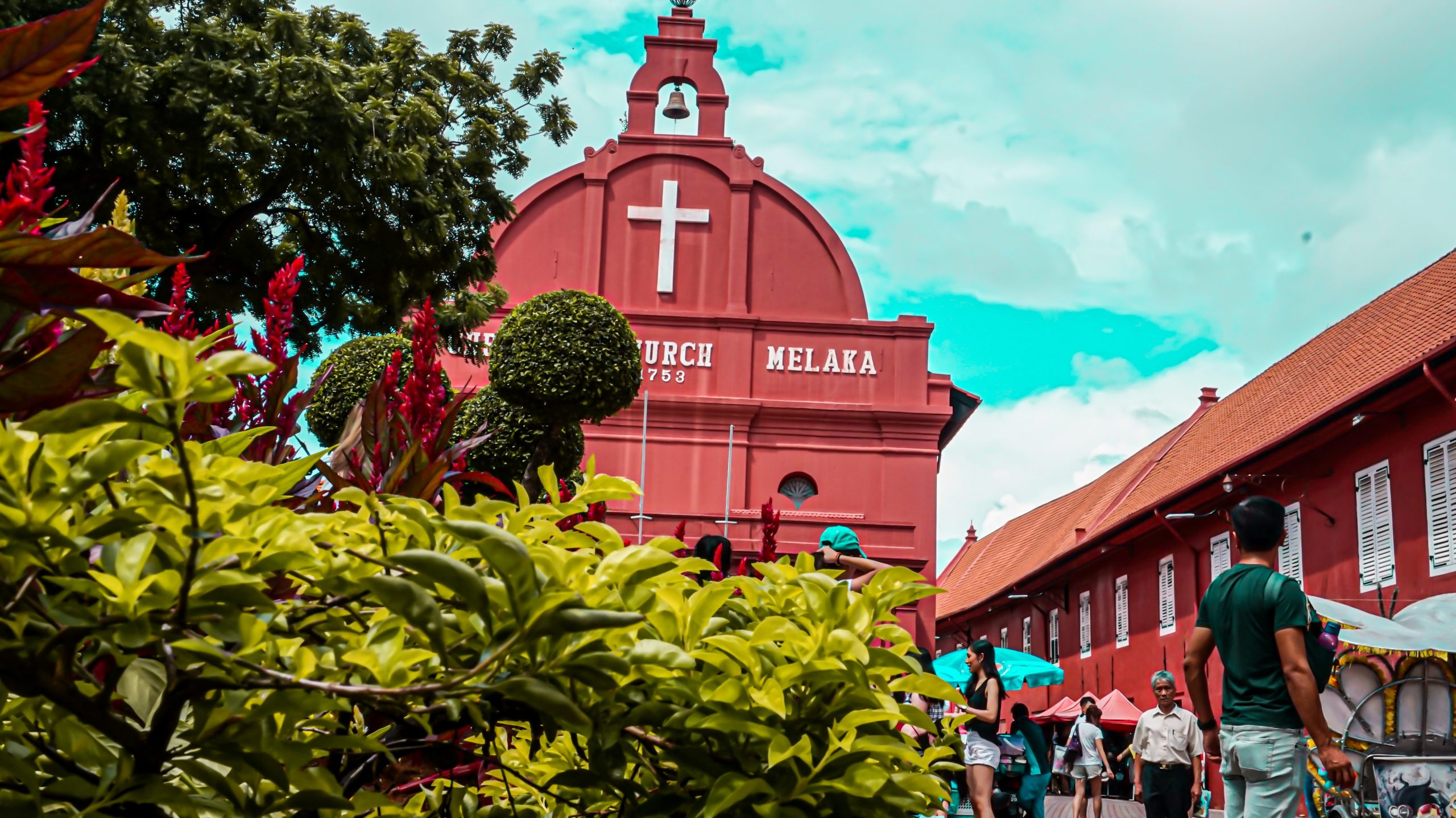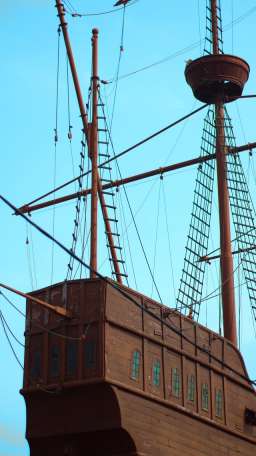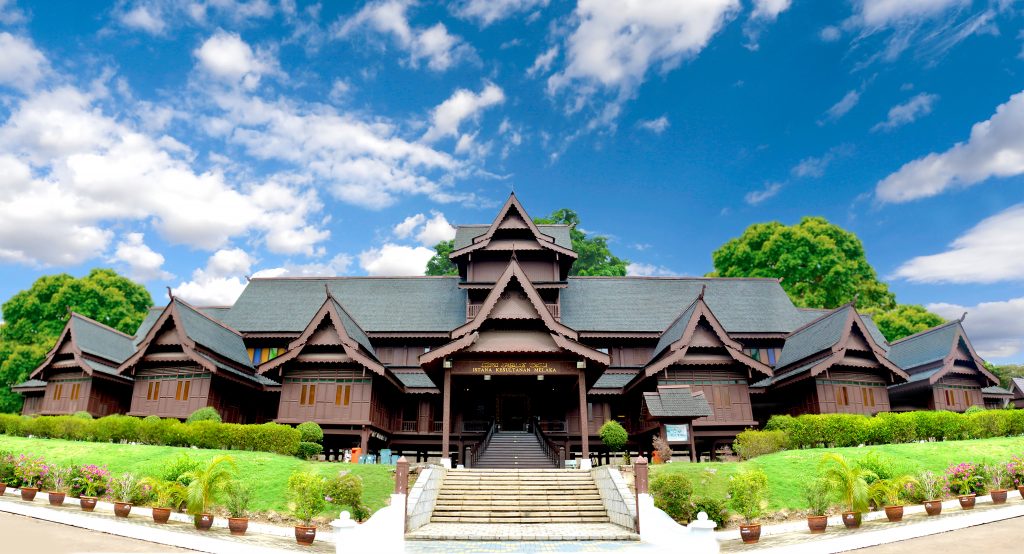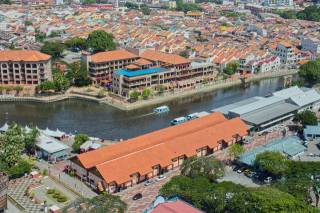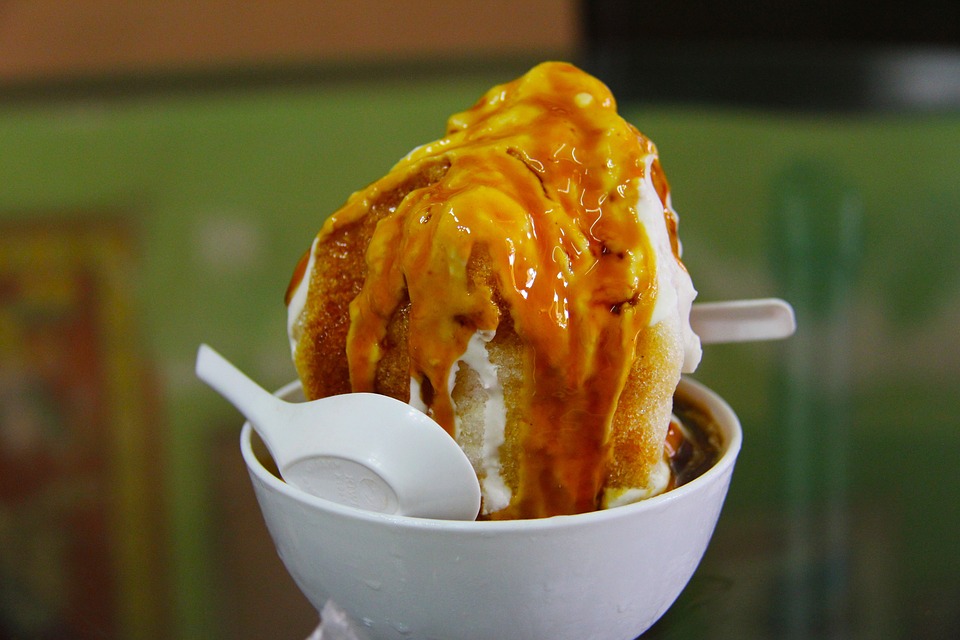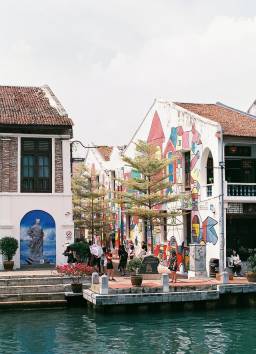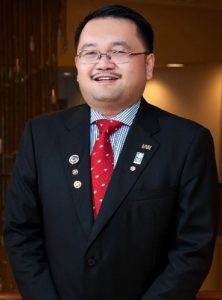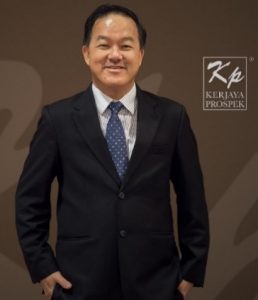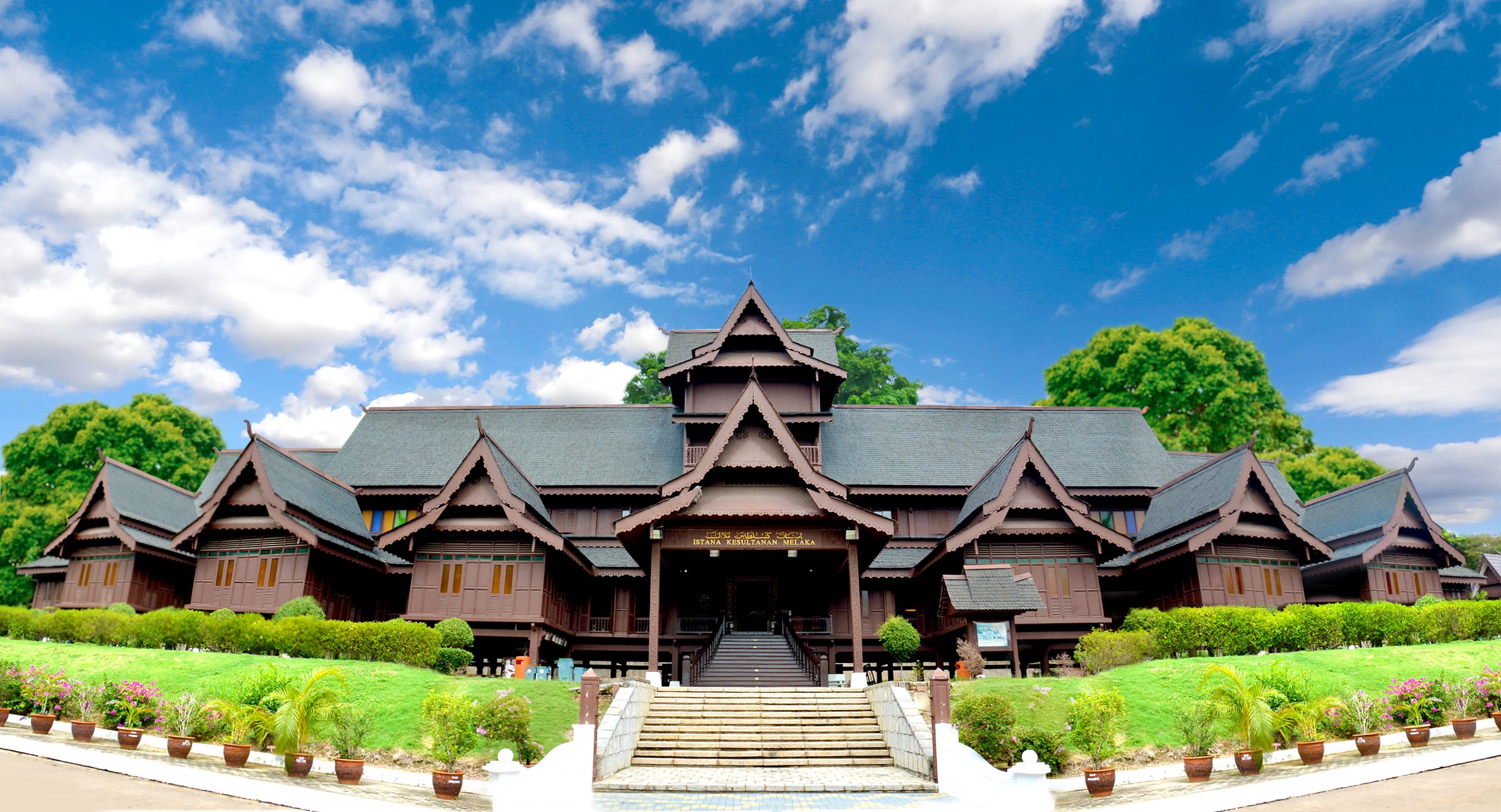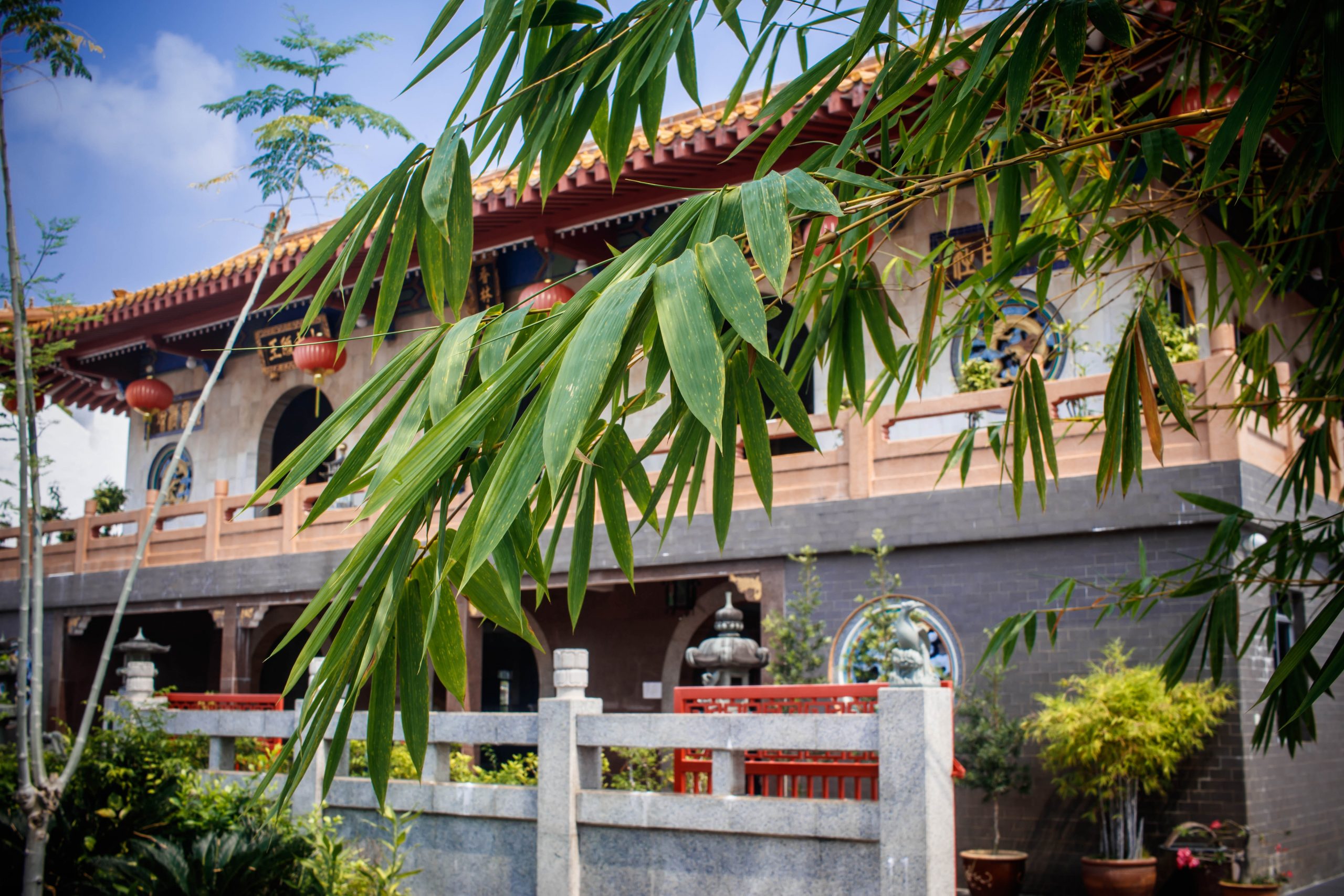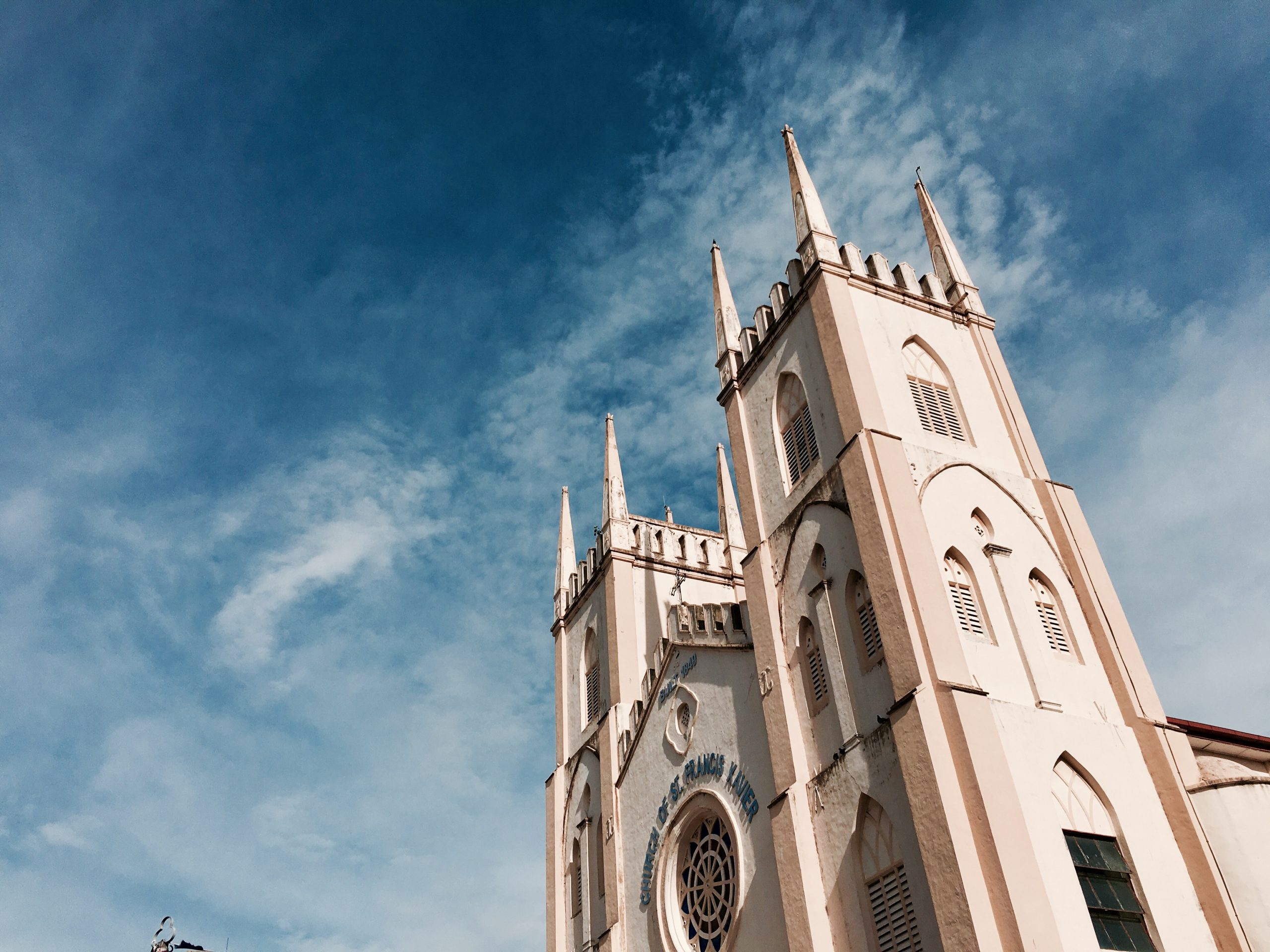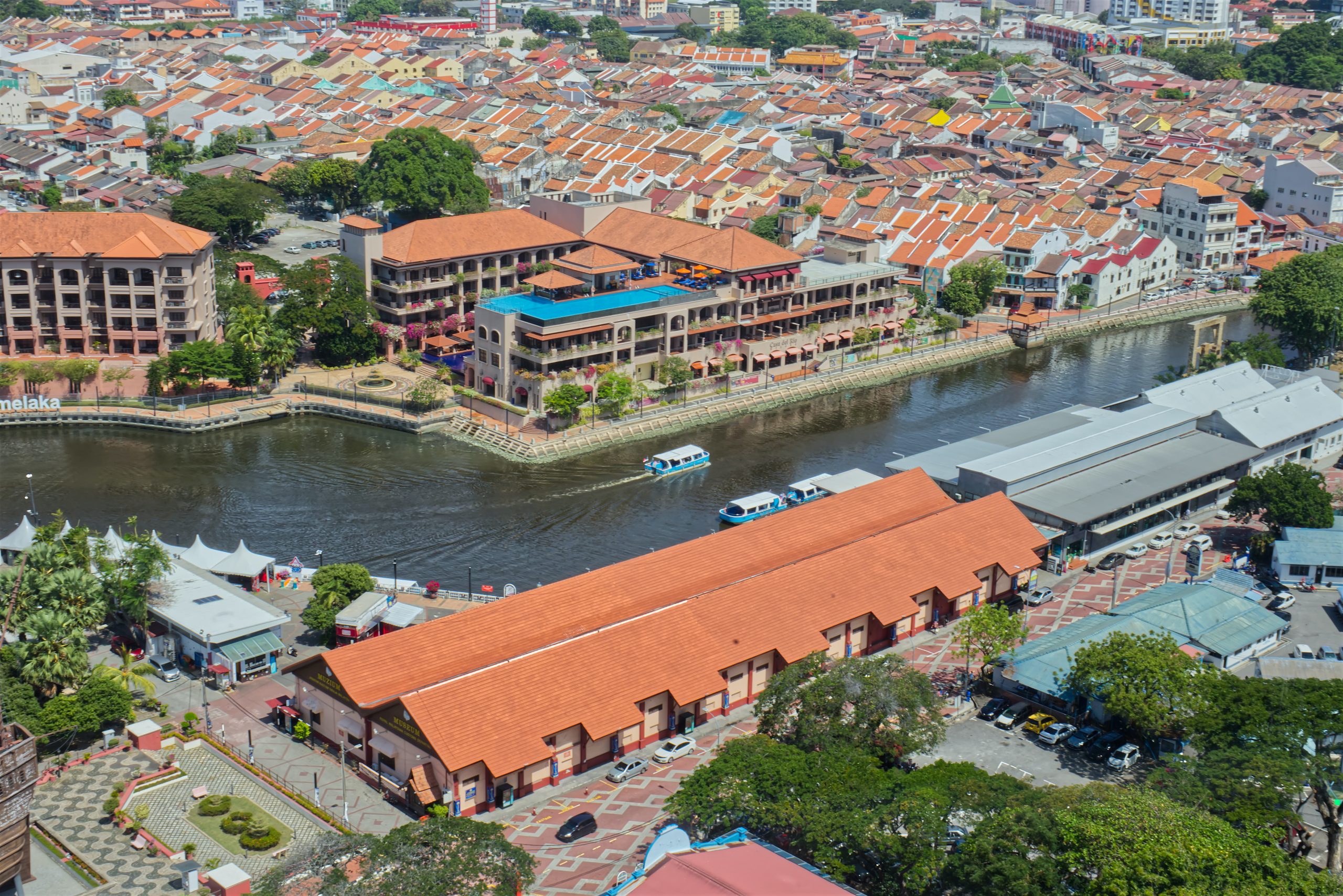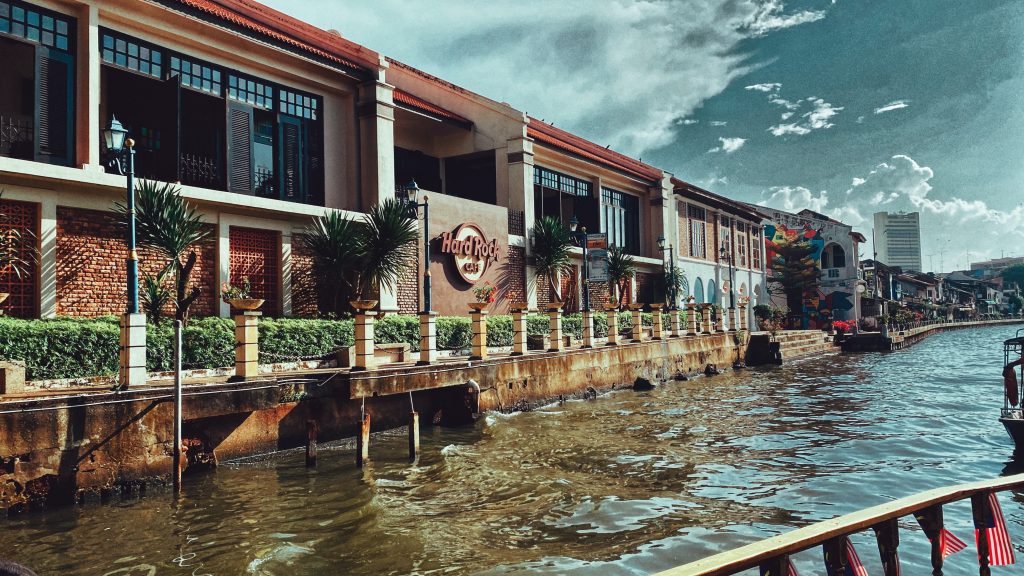HISTORY
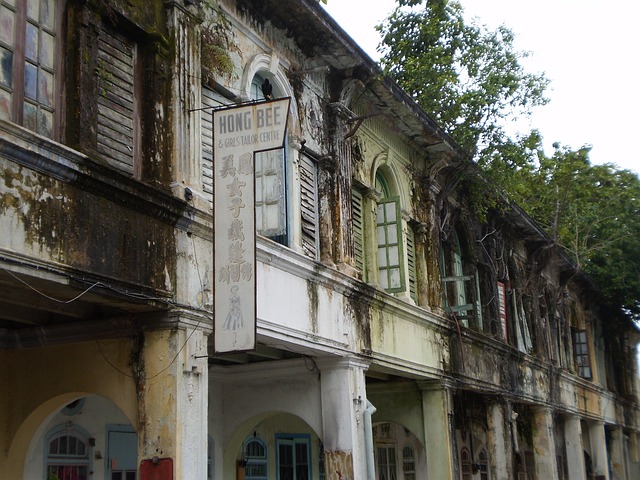
Colonial houses, strait of Malacca
According to legend, Malacca was founded c.1400 by a Hindu prince named Parameswara originally from Palembang, Sumatra. After his territory came under attack from Majapahit forces, Parameswara fled to Temasek island, which is an older name for Singapore.
From Temasek, Parameswara made his way north up the coast of the Malay peninsula. At one rest stop when sitting under a tree, he saw a mouse deer kick his hunting dogs into the river. The tree under which Parameswara had rested was the Pokok Melaka. Encouraged by the courage of the deer and seeing it as an omen of the weak being able to overcome the powerful, he decided to set up his settlement there.
The formidable mouse deer was seen to be a good omen not only by Parameswara but by his successors. Today Malacca’s official coat-of-arms has a pair of mouse deer flanking its shield.
Going by the standard official historical narrative, Parameswara converted to Islam after some years in Malacca and took the Muslim name Iskandar Shah. Thus was established in 1414 the illustrious Malacca Sultanate considered as the foundation stone of Malay-Muslim civilization.
A sultan sitting on the throne of Malacca paved the path for the concept daulat Melayu (kingship of Malay rulers). This ’Alam Melayu’ realm enjoyed a golden age during the reign of the Malacca Sultans and reached its pinnacle under Sultan Mansur Shah (1459–1477). Mansur Shah was said to have taken a Chinese princess Hang Li Po as his wife although this story could well be merely apocryphal.
What’s factual is that Malacca had established contact with China’s Ming dynasty through Chinese-Muslim explorer Cheng Ho (pinyin spelling Zheng He) who made multiple sea voyages to Malacca in 1405, 1409, 1413, 1416 and 1430. On these expeditions, Admiral Zheng He brought along large numbers of Chinese Muslims whom he left behind in Malacca.
Admiral Zheng He also transported Parameswara and the latter’s royal entourage in his Chinese armada of ships to the Middle Kingdom. Parameswara was welcomed by the Ming court to pay tribute to Emperor Yung-Lo in 1411 following which the new Malay kingdom appears to have received Chinese protection from attacks by Siam and Majapahit.
During its heyday, Malacca was a bustling multicultural port city where Chinese merchants and Indian, Arab and Persian traders all came to establish their trading bases. In fact some accounts place it as among the greatest ports in the world in the late 15 century.
The Portuguese and other Europeans also were drawn to the wealth of Malacca but they came to conquer. Portugal at that time was a seafaring colonial empire. Its naval fleet under the command of crusading general Alfonso de Albuquerque arrived in July 1511 and seized Malacca through their superior firepower.
Following their conquest, garrisons of Portuguese soldiers built the A’Famosa fort strategically on a hill. The Malacca royals went into exile and their bloodline became the Malay ruling dynasties of Johor and Perak.

The oriental red building in Melaka, Malacca, Malaysia.
In 1641, the Dutch East India Company or Vereenigde Oostindische Compagnie (VOC) captured Malacca from the Portuguese. The VOC ruled over Malacca until 1795.
The British East India Company (EIC) in turn occupied Malacca from 1795 to 1818. As a result of the Anglo-Dutch Treaty of 1824 signed between Britain and Holland, the British took control of Malacca as a crown colony while at the same time ceding parts of Sumatra and Java to the Dutch VOC.
In 1826, Malacca together with Penang and Singapore formed the British Straits Settlements.
Malacca together with Penang became part of the Malayan Union on 1 April 1946 which later became the Federation of Malaya on 1 February 1948. The declaration of independence was made by the first Prime Minister of Malaya, Tunku Abdul Rahman, at Padang Pahlawan in the town on 20 February 1956.
Malacca’s diverse and cosmopolitan history today is reflected in its many period buildings at the center of the city. Malacca was declared a historical city on 15 April 1989. Since 2008, Malacca’s old city has been placed on the list of Unesco world heritage sites.
